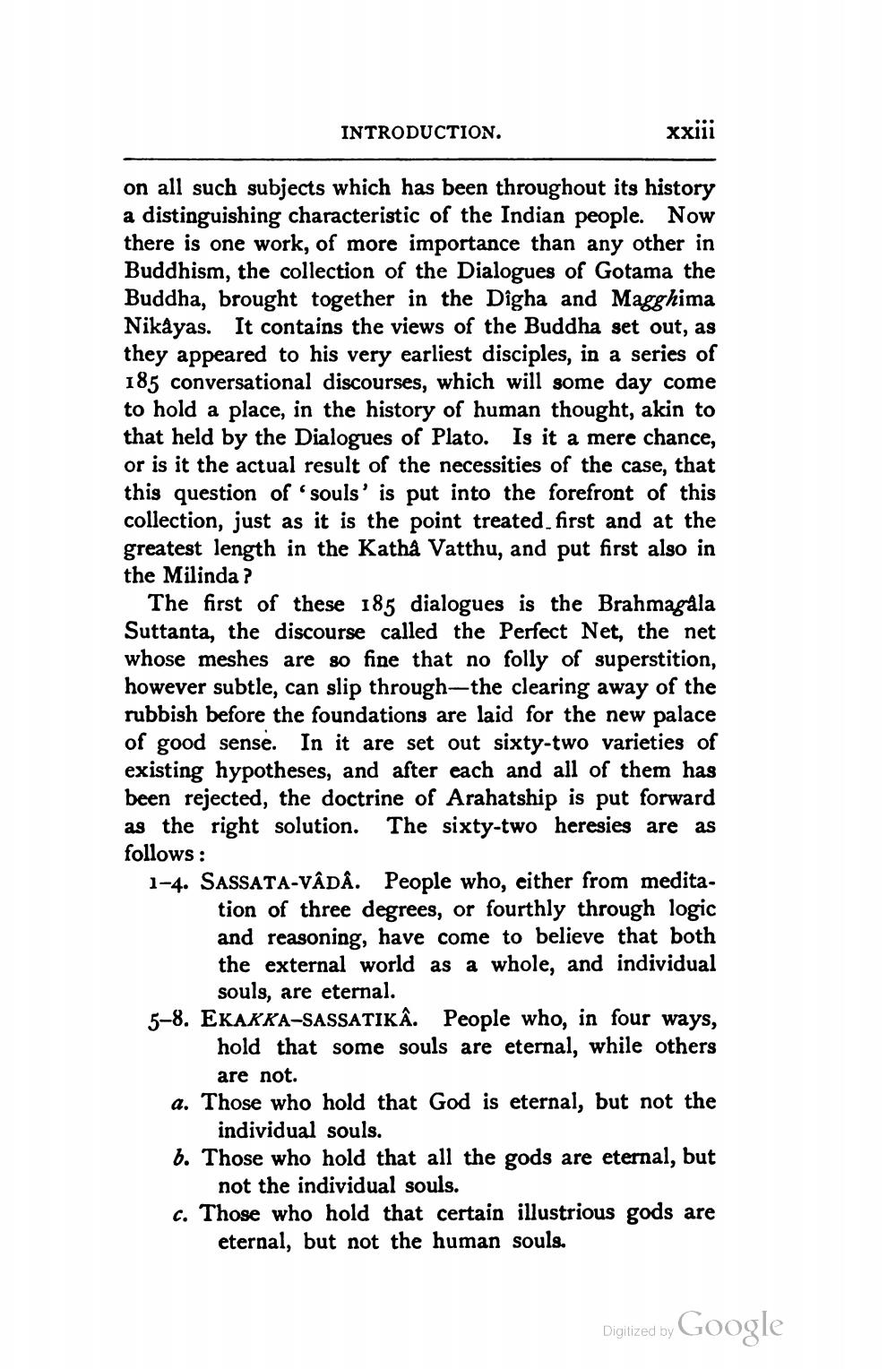________________
INTRODUCTION.
xxiii
on all such subjects which has been throughout its history a distinguishing characteristic of the Indian people. Now there is one work, of more importance than any other in Buddhism, the collection of the Dialogues of Gotama the Buddha, brought together in the Digha and Magghima Nikayas. It contains the views of the Buddha set out, as they appeared to his very earliest disciples, in a series of 185 conversational discourses, which will some day come to hold a place, in the history of human thought, akin to that held by the Dialogues of Plato. Is it a mere chance, or is it the actual result of the necessities of the case, that this question of souls' is put into the forefront of this collection, just as it is the point treated first and at the greatest length in the Katha Vatthu, and put first also in the Milinda?
The first of these 185 dialogues is the Brahmagala Suttanta, the discourse called the Perfect Net, the net whose meshes are so fine that no folly of superstition, however subtle, can slip through-the clearing away of the rubbish before the foundations are laid for the new palace of good sense. In it are set out sixty-two varieties of existing hypotheses, and after each and all of them has been rejected, the doctrine of Arahatship is put forward as the right solution. The sixty-two heresies are as follows: 1-4. SASSATA-VÂDÅ. People who, either from medita
tion of three degrees, or fourthly through logic and reasoning, have come to believe that both the external world as a whole, and individual
souls, are eternal. 5-8. EKAKKA-SASSATIKÂ. People who, in four ways,
hold that some souls are eternal, while others
are not. a. Those who hold that God is eternal, but not the
individual souls. b. Those who hold that all the gods are eternal, but
not the individual souls. c. Those who hold that certain illustrious gods are
eternal, but not the human souls.
Digitized by Google




